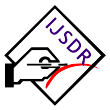Imp Links for Author
Imp Links for Reviewer
Research Area
Subscribe IJSDR
Visitor Counter
Copyright Infringement Claims
Indexing Partner
|
Published Paper Details
|
|
| Paper Title: | Formulation and evaluation of orodispersible liquisolid tablets of Haloperidol |
| Authors Name: | Duniya Asokan , Dr.Ann Rose Augusthy , Dr.Vipin K V , Abhila V Mukund , Femi Joseph |
| Unique Id: | IJSDR2111010 |
| Published In: | Volume 6 Issue 11, November-2021 |
| Abstract: | The present study aimed to enhance the dissolution rate of a poorly water-soluble drug, Haloperidol by adopting liquisolid compact technique and formulating it into an orodispersible system to overcome the gastric metabolism of the drug. Here 12 different formulations of liquisolid compacts of Haloperidol were formulated by varying the concentration of drug solution from 10-30%w/v. Avicel pH 102 and Aerosil 200 was used as carrier and coating material respectively. Crospovidone and SSG in the ratio of 1:1 were added to the formulation for faster disintegration. Prior to the compression of orodispersible tablets all the 12 batches of liquisolid compacts were subjected to precompression evaluations and the results were found to be satisfactory. Further, the prepared powder blends were directly compressed into orodispersible liquisolid tablets. The orodispersible liquisolid tablets were evaluated for the post-compression parameters like weight variation, hardness, friability, disintegration test, wetting time, water absorption ratio, drug content, and in-vitro dissolution studies. From the obtained results, it could be concluded that the formulation LS2 with 10% concentration of drug solution and carrier to coating material in the ratio of 20:1, exhibits quick disintegration and had a maximum drug release of 98.1% at the end of 30 minutes. Liquisolid tablet (LS2) demonstrated a significantly higher drug release rate than those of marketed tablet, which may be due to enhanced wetting properties and increased effective surface area of the drug. The results of the kinetic study revealed that the formulation followed first-order kinetics with a dissolution-controlled release pattern. From the results of stability studies, the batch was found to be stable. In conclusion, the liquisolid compacts technique can be a promising alternative for the formulation of water-insoluble drugs, such as Haloperidol into rapid-release tablets. In conclusion, combining the liquisolid technology and orodispersible system can be used as a promising alternative to improve the dissolution rate of poorly water soluble drugs like Haloperidol. |
| Keywords: | Liquisolid technique, Haloperidol, orodispersible tablets. |
| Cite Article: | "Formulation and evaluation of orodispersible liquisolid tablets of Haloperidol", International Journal of Science & Engineering Development Research (www.ijsdr.org), ISSN:2455-2631, Vol.6, Issue 11, page no.41 - 49, November-2021, Available :http://www.ijsdr.org/papers/IJSDR2111010.pdf |
| Downloads: | 000337212 |
| Publication Details: | Published Paper ID: IJSDR2111010 Registration ID:193696 Published In: Volume 6 Issue 11, November-2021 DOI (Digital Object Identifier): Page No: 41 - 49 Publisher: IJSDR | www.ijsdr.org ISSN Number: 2455-2631 |
|
Click Here to Download This Article |
|
| Article Preview | |
|
|
|
Major Indexing from www.ijsdr.org
| Google Scholar | ResearcherID Thomson Reuters | Mendeley : reference manager | Academia.edu |
| arXiv.org : cornell university library | Research Gate | CiteSeerX | DOAJ : Directory of Open Access Journals |
| DRJI | Index Copernicus International | Scribd | DocStoc |
Track Paper
Important Links
Conference Proposal
ISSN
 |
 |
DOI (A digital object identifier)
  Providing A digital object identifier by DOI How to GET DOI and Hard Copy Related |
Open Access License Policy
Social Media
Indexing Partner |
|||
| Copyright © 2024 - All Rights Reserved - IJSDR | |||






Facebook Twitter Instagram LinkedIn